Re: India & Natural Disaster Management
Posted: 17 May 2015 10:37
Does India have standardised pallet or container of relief materials for supporting operations in eqk or flood hit zones?
Consortium of Indian Defence Websites
https://forums.bharat-rakshak.com/
Exactly.Singha wrote:each team can expect disruptions in the usual telecom system. so some kind of uhf/vhf radios or satellite phones are a must , along with a receiver of the kind SF units use to hook into laptop and send/recv emails photos and ISRO survey data directly.
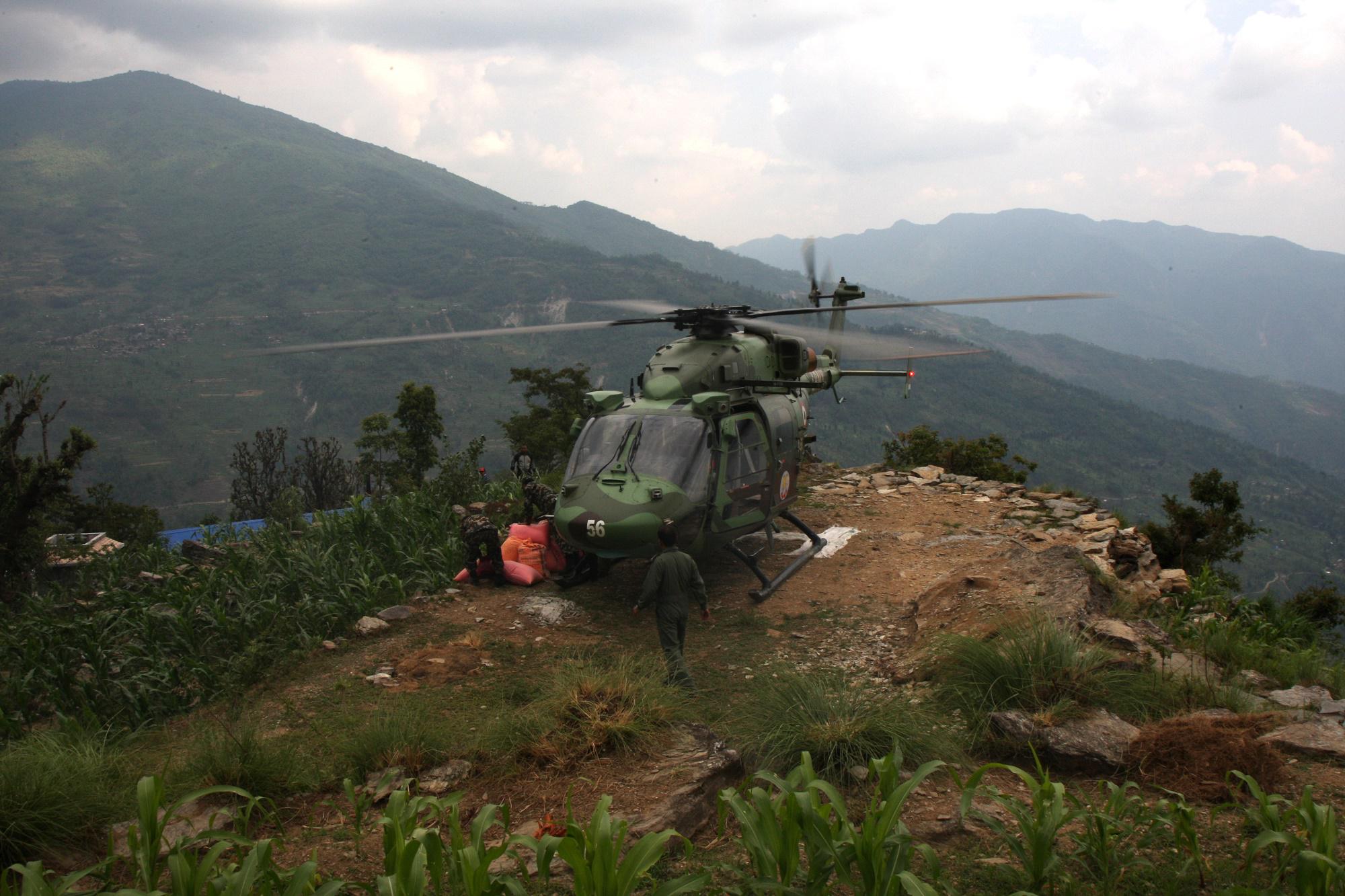
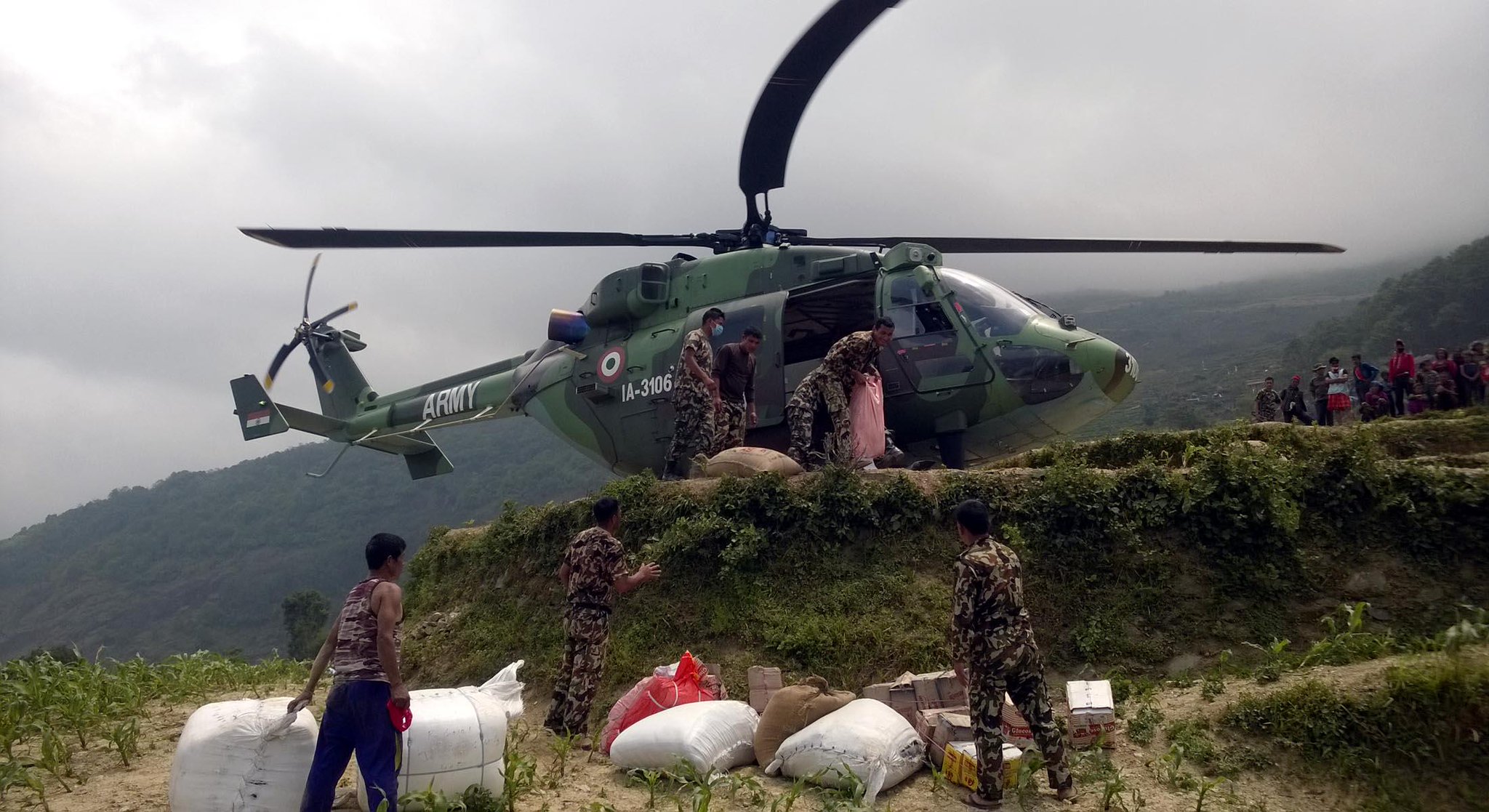
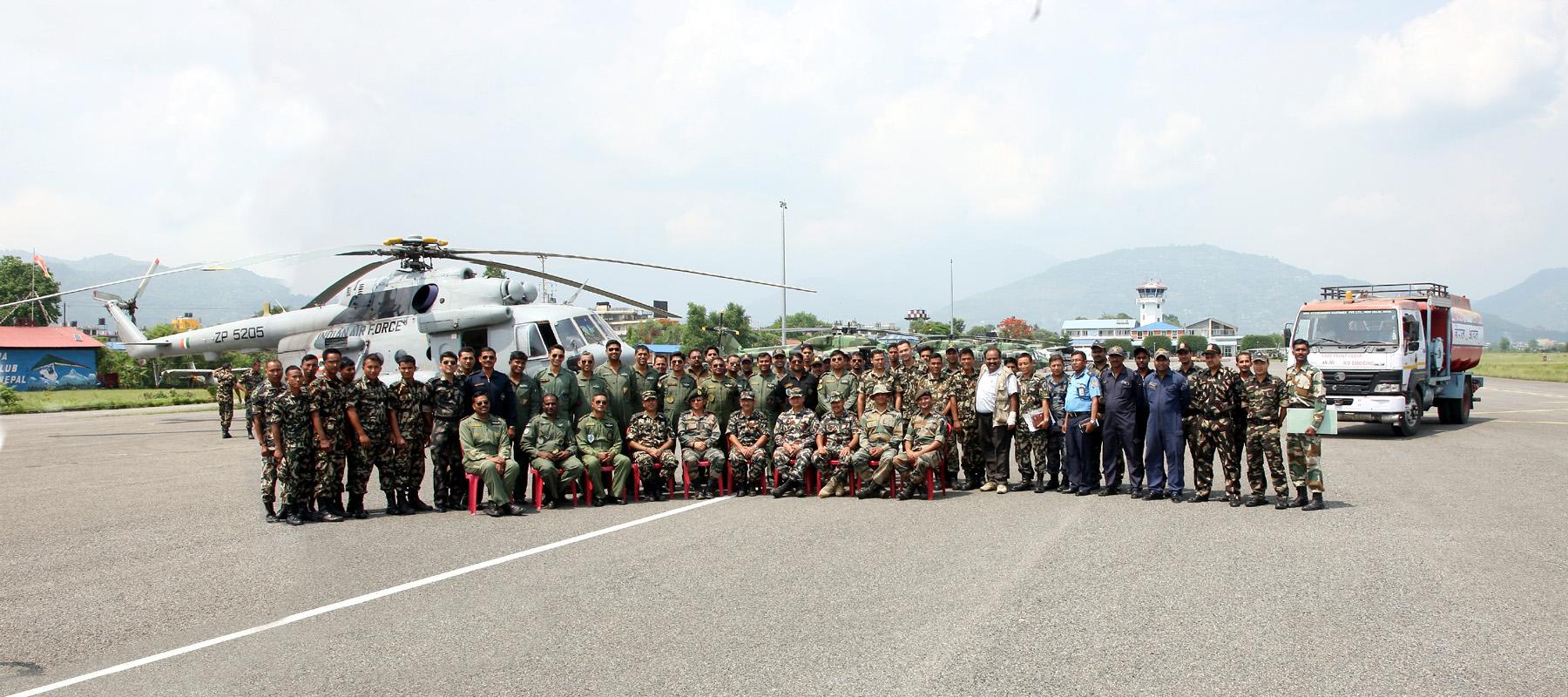
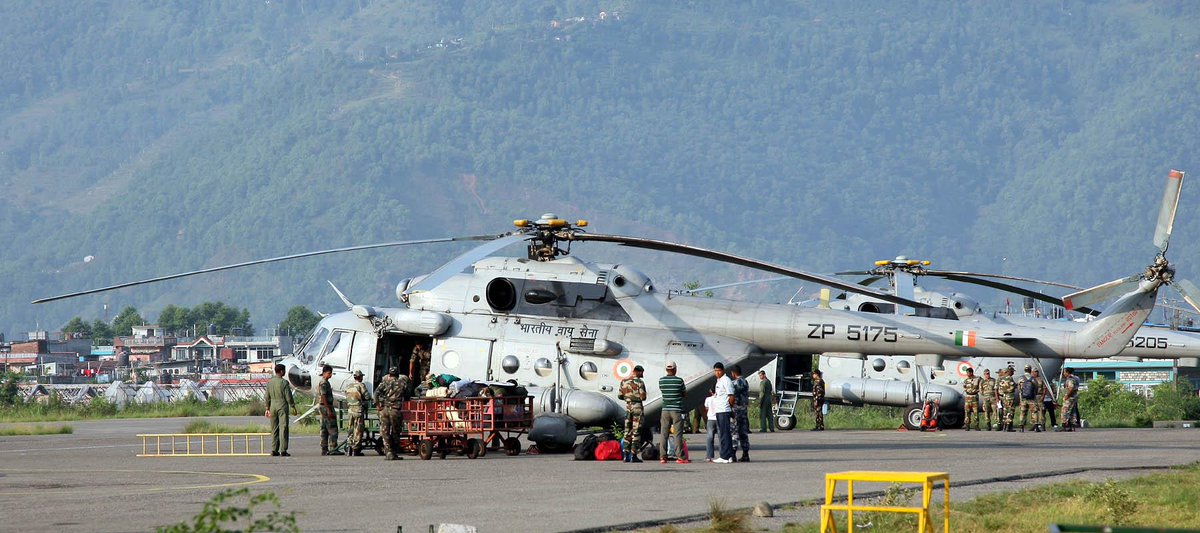
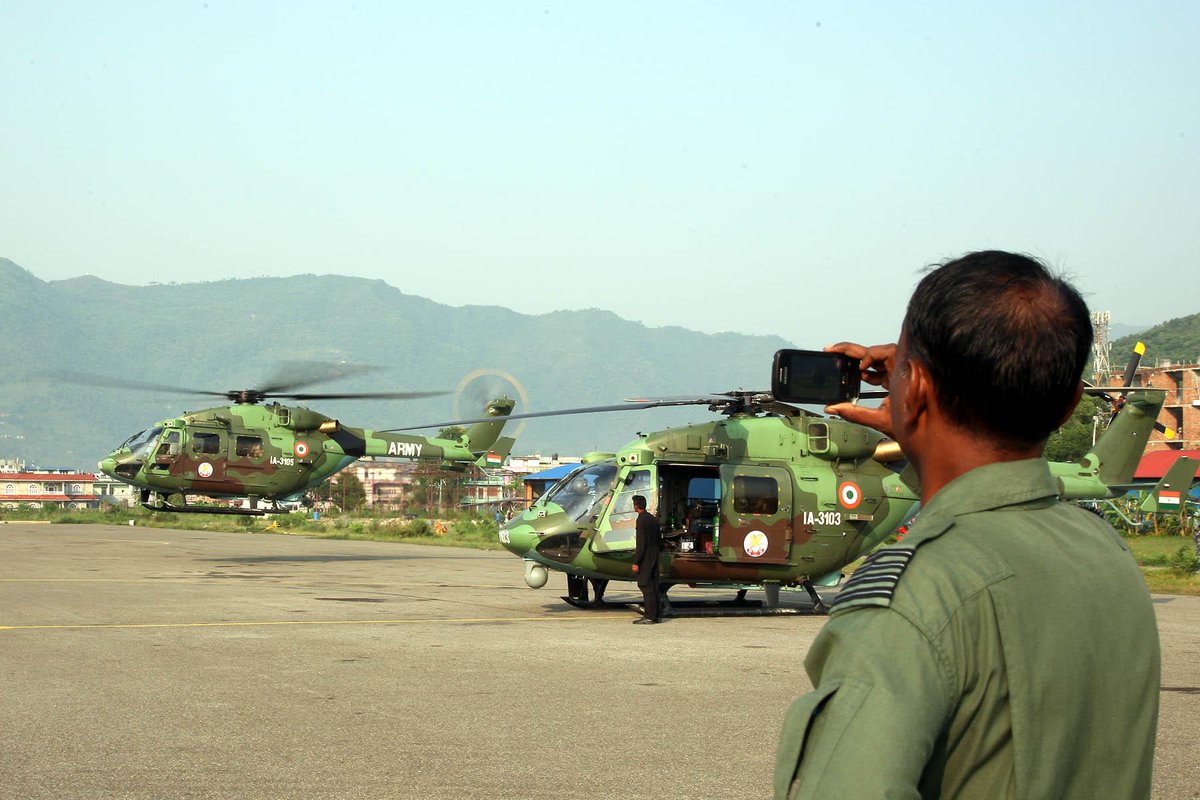

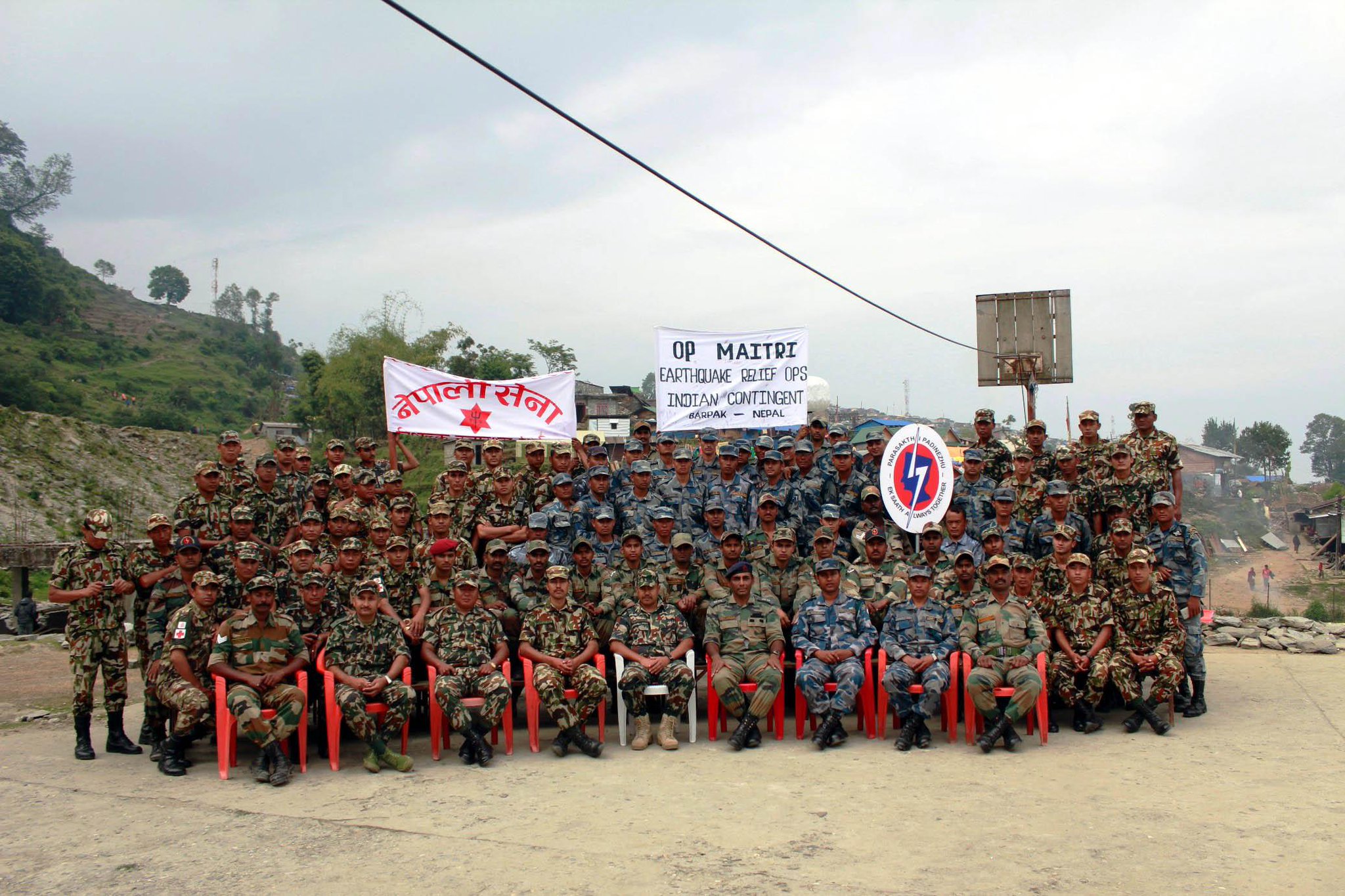

Daily Mail
£1m 'wasted' on Nepal Chinooks: Helicopters set to return to Britain after ...
Daily Mail - 4 hours ago
British military helicopters sent to Nepal to help with the relief effort were last night on their way home after they were barred from the country following diplomatic wrangling.
India would need to do this at every Rain!RamaY wrote:Indian industry can easily do this product... This helps in many areas...
http://youtu.be/jLCrEDGH4tc

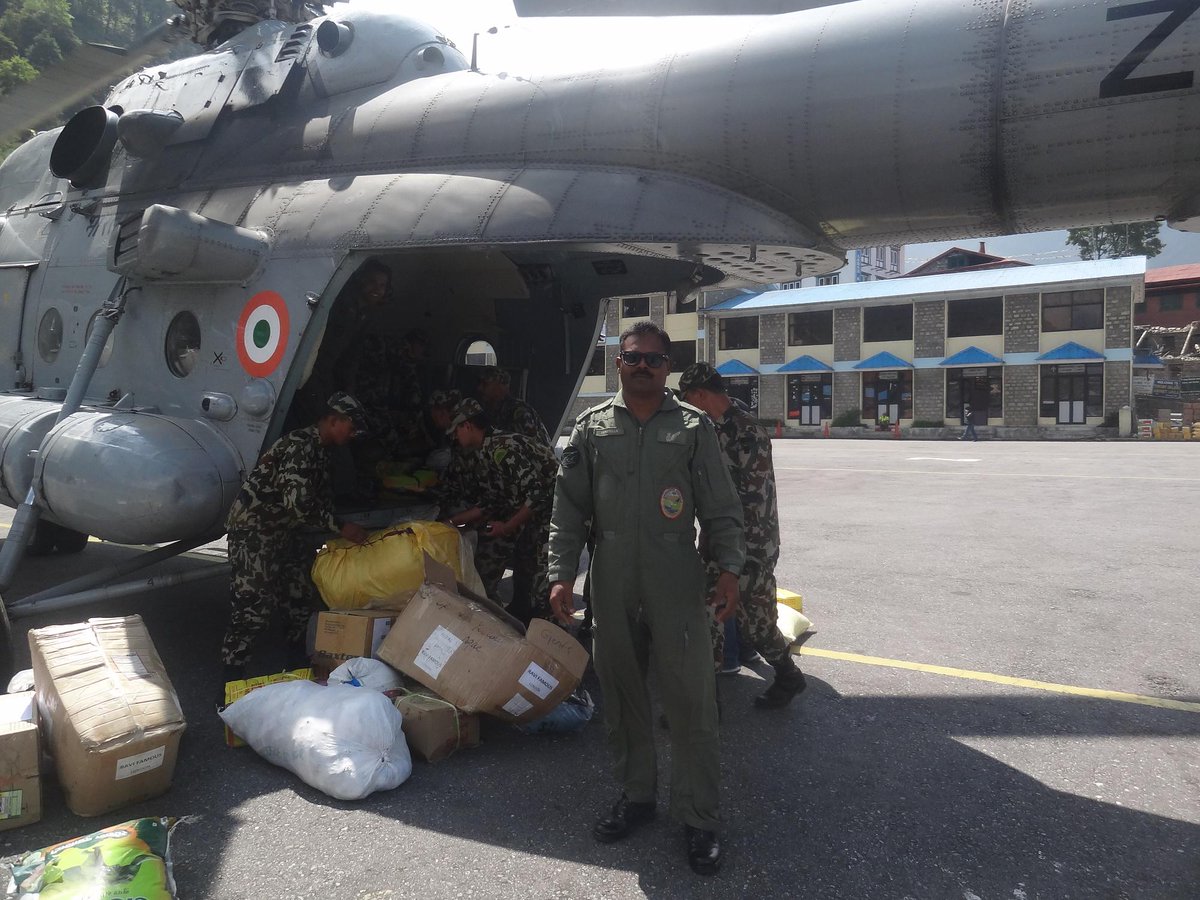
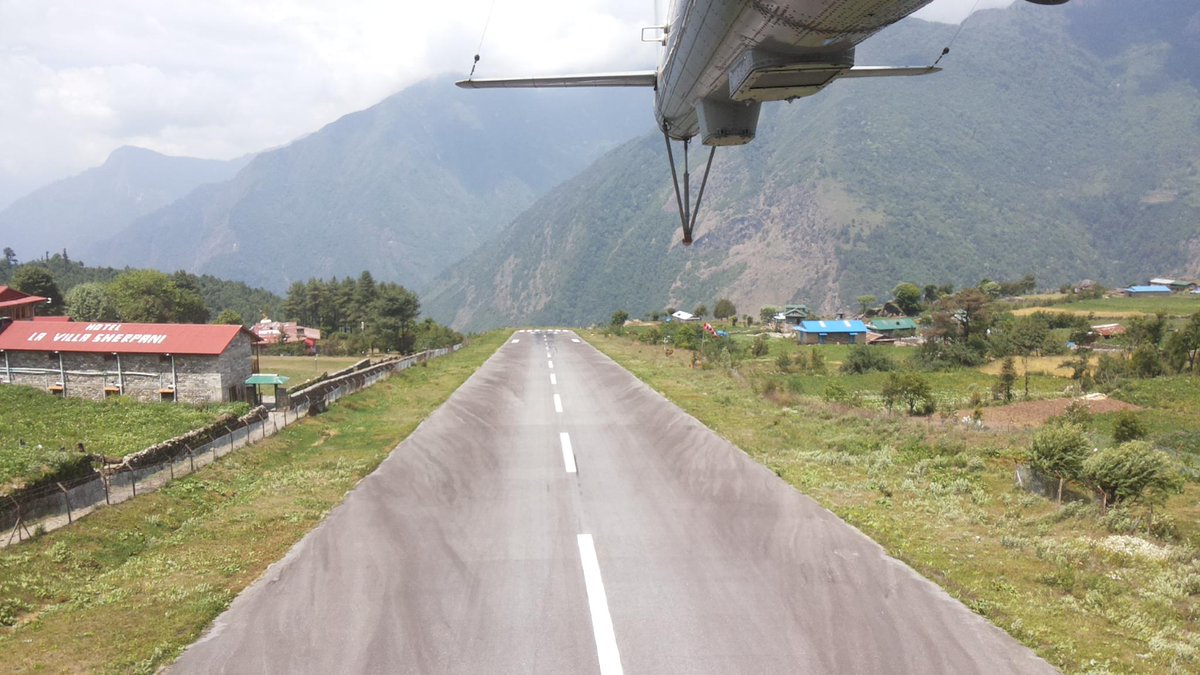
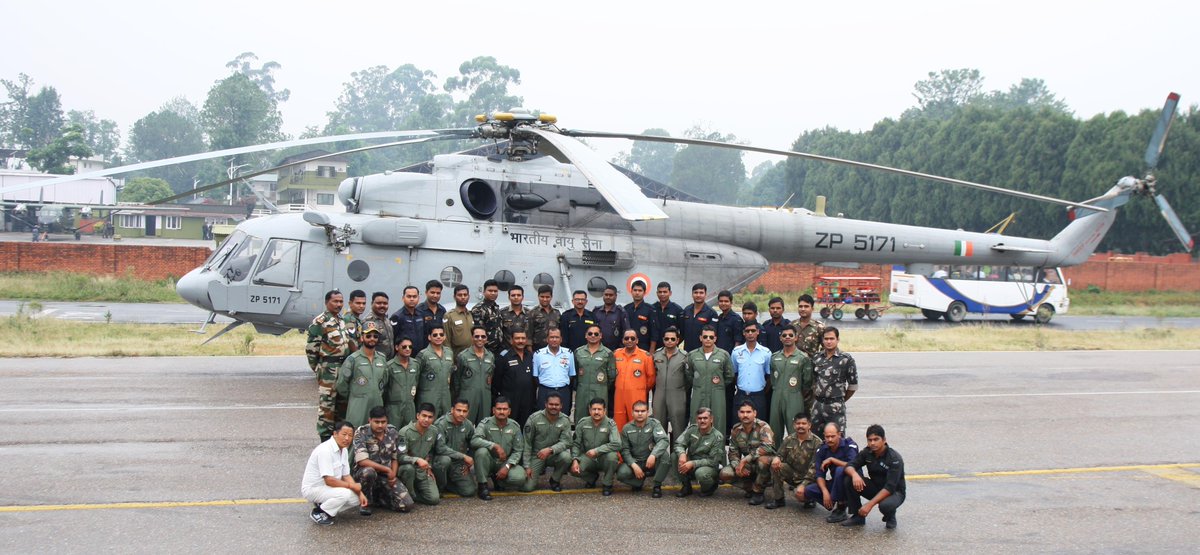
Even as senior ministers in the Jammu and Kashmir government are hopeful that Centre will release a huge package for the flood victims in the coming weeks, the Union government has already deducted Rs 500 crore from the recently announced package of 1,667 crore to settle the bill of Defence Ministry.
Recently, the Modi government had announced release of Rs 1,667 crore for the flood-hit state.
Meanwhile, the Defence Ministry had submitted a bill of Rs 500 crore for relief and rescue operations undertaken by the Army and Air Force during last September’s flood in the state.
The Centre has now diverted Rs 500 crore from the State Disaster Response Fund to the Defence Ministry.
Last September, the Army and Air Force carried out relief operations named Operation Megh Rahat after many parts of Valley got flooded.
During the operation, the IAF air dropped food and relief items. Large number of stranded tourists were also airlifted from Srinagar free of cost.
Speaking to The Indian Express , J&K Education Minister Naem Akthar said that he was not aware whether any money has been diverted from the State Disaster Response Fund to the Army.
Minister of State for Power in the J&K government, Mohammad Ashraf Mir, however, termed it as an “unfortunate development”.
“They have been claiming that Army is helping people in the flood. It is very unfortunate that Army has now charged money for rescuing people who were in need of help,” Mir said.
“Will the Centre also charge bill to Nepal government for rescuing the civilians during earthquake?” he asked
This is what I wrote at about 1.43PM when I felt tremblor in Delhi. What I did not know then that it has resulted in tragedy in Afganistan.chaanakya wrote:Delhi is witnessing minor tremblor or quake. This is quite frequent and often hit by low intensity earthquakes.
don't know if it is due to Africa summit in Delhi or NaMo making speeches in Bihar today
If Delhi were to be hit with quake of this intensity casualty could be in lakhs. No earthquake norms have been followed for older buildings incl those in LZ. Though bye laws are revised it is yet to make its impact on construction industry and unsafe high rises are proliferating.KABUL/PESHAWAR (Pakistan): A 7.5-magnitude earthquake struck a remote area of northeastern Afghanistan on Monday, shaking the capital Kabul and killing 100 people - 76 in Pakistan and 24 in Afghanistan - officials said.
The death toll could climb in coming days because communications were down in much of the rugged Hindu Kush mountain range area where the quake was centred.
Shockwaves were felt in northern India and in Pakistan's capital Islamabad, where hundreds of people ran out of buildings as the ground rolled beneath them.
All Indians in Kabul are safe and there are no reports of damage to Indian owned property in the city in the wake of the devastating earthquake, an Indian embassy official said.
"As of now, there are no reports of casualties or injuries among Indians," the official said, adding that Indian ambassador Amar Sinha was going around the city to assess the situation.
The quake was 213km (132 miles) deep and centred 254km (158 miles) northeast of Kabul in a remote area of Afghanistan in the Hindu Kush mountain range.
The US Geological Survey initially measured the quake's intensity at 7.7 then revised it down to 7.5. Aftershocks continue to hit the affected areas.
Twelve girls were killed in a stampede while trying to escape from their school in the north Afghan city of Taloqan while five people were killed in the eastern province of Nangahar.
"The students rushed to escape the school building in Taluqan city (capital of Takhar), triggering a stampede," Takhar education department chief Enayat Naweed said. "Twelve students, all minors, were killed and 35 others were injured."
In northwestern Pakistan, at least 12 people were killed, including one in the city of Peshawar, according to government officials.
Injured people were pouring into Peshawar's Lady Reading Hospital, an official said.
Patients are brought to a hospital in Mingora after 7.5 magnitude earthquake in Afghanistan. (AP photo)
"We received 50 injured and more are being shifted. The injured suffered multiple injuries due to building collapse," said hospital spokesman Syed Jamil Shah.
In the Afghan capital, Kabul, buildings shook violently but there were no immediate reports of damage or injuries.
International aid agencies working in the northern areas of Afghanistan reported that cellphone coverage in the affected areas remained down in the hour after the initial quake.
India's northernmost region of Kashmir experienced intense and prolonged tremors that caused panic in areas that suffered severe flooding last year. Power supplies and most mobile networks were knocked out, and there was structural damage to roads and buildings. However, no casualties were reported in the state.
The earthquake struck almost exactly six months after Nepal suffered its worst quake on record, on April 25. Including the toll from a major aftershock in May, 9,000 people lost their lives and 900,000 homes were damaged or destroyed.
The mountainous region is seismically active, with earthquakes the result of the Indian subcontinent driving into and under the Eurasian landmass. Sudden tectonic shifts can cause enormous and destructive releases of energy.
A 7.6 magnitude earthquake struck northern Pakistan just over a decade ago, on October 8, 2005, killing about 75,000 people.
KANPUR: Experts of IIT Kanpur will conduct mapping of the active faults in the country that can trigger earthquakes. But first an expert team will be prepared for carrying out the lengthy task for which a class cum practical training workshop has kickstarted at IIT-K.
It will be two months from now that the experts will conduct the study at the foothill zones of Chandigarh, Dehradun and Punjab. The experts will study active faults here and thereafter, digitize the fault maps. This team will be headed by IIT-Kanpur professor of civil engineering department, Javed N Malik.
Two other teams headed by other experts will identify the active faults and map them in Gujarat and Jammu and Kashmir, Central to North Western Himalayas respectively. This is for the first time that the work of mapping of the active faults is being done on such a massive scale. The entire work is being done in the backdrop of the Nepal earthquake which had hit this year, causing massive destruction and loss of precious lives.
In geology, subduction denotes a tectonic plate colliding with, and then moving under another plate.
“Monday’s earthquake looks like a far outlier in the Afghanistan-Turkmenistan belt, far beyond the Indian plate, but it actually appears to have been triggered by the leading edge of the Indian plate pushing below the Himalayan plate,” Rajendran said.
The Himalayas, perched precariously on the edges of two colliding continental plates – Indian and Eurasian – is priming for a catastrophic earthquake, said Rajendran, who led an Indo-Australian study on the subject.
The Indian plate started drifting towards the Eurasian one millions of years ago when a colossal chunk of land from what is now Australia broke off and fused with Asia to form the Indian subcontinent.
New research, partly funded by the Indian government to forecast earthquakes, has grim news to share – a great quake never seen in centuries could strike Uttarakhand and an area home to 10 million people.
That’s because a 700-year-old “fault” beneath the state has reached a tipping point, a large team of Indian and Australian experts, including Rejendran, concluded after gruelling laboratory and on-site investigations. The investigations included the scouring of the riverbeds of the Bhagirathi, Alaknanda and Kali.
andJoint Field Exercise on Collapsed Structure Search & Rescue (CSSR) Techniques conducted in SAADMEx- 2015
On the initiative of the Government of India, first "South Asian Annual Disaster Management Exercise (SAADMEx)” -2015 is being organized in New Delhi and NCR region from November 23-26, 2015. National Disaster Response Force (NDRF) is playing the lead role in conducing SAADMEx- 2015 with the support of National Disaster Management Authority (NDMA), National Institute of Disaster Management (NIDM), Union Ministry of Home Affairs (MHA) and Union Ministry of External Affairs (MEA).
Today, in continuation of the SAADMEx-2015, Joint Field Training Exercise on Collapsed Structure Search & Rescue (CSSR) techniques was conducted by NDRF at NTH Complex, Kamla Nehru Nagar, Ghaziabad (Uttar Pradesh) with active participation of all eight member nations of the South Asian Association for Regional Cooperation (SAARC), - Afghanistan, Bangladesh, Bhutan, India, Maldives, Nepal, Pakistan and Sri Lanka.
For the purpose of giving actual feel of disaster (Exercise), a Custom Check Post, Reception & Departure Centre (RDC), Multi-Nation Coordination Centre, On-Site Operation Coordination Centre (OSOCC), Command Post, Communication Centre, Emergency Operation Centre (EOC), Community Centre, Base Medical Station, Rehabilitation Centre & Living Tent were properly established by NDRF as per the International Search & Rescue Advisory Group (INSARAG) guidelines for familiarization & exercise purpose at the venue. Firstly, functioning & response mechanism of above mentioned Centres including International Urban Search and Rescue (USAR) mechanism & USAR Coordination Structure were discussed with all delegates & participating teams of SAARC nations by NDRF officials.
As per the scenario painted, it is presumed that thousands of buildings collapsed after an impact of earthquake (magnitude on Richter Scale 6.in National Capital Region (NCR) and Northern part of the country. The Epicenter assumed at Roorkee (Uttarakhand) about 180 km North-East of Delhi. About 2,000 people reported to have died, 4,000 are injured and over 8,000 are missing. Large numbers of people are expected to be trapped under debris of the collapsed structure. Retrieval of injured from collapsed house is a mammoth task for responders and State Government. Considering the huge impact of the disaster, help of South Asian countries was decided to be asked by the Government of India.
Rescue Teams of all SAARC nations promptly responded as per the painted scenario & demonstrated quick response and their CSSR skills / professional capabilities with the help of hi-tech equipment to extricate trapped victims from debris of the collapsed building. Trained sniffer dogs were also placed on service to trace the trapped victims.
Joint Field Training Exercise was conducted under overall supervision of Shri O P Singh, Director General, NDRF and witnessed by representatives from Senior Officers of NDMA, NIDM, MHA, MEA, Army, NDRF, State representatives & other senior dignitaries. Shri O P Singh, Director General, NDRF expressed his immense pleasure on successful conduct of today’s Joint Field Exercise of SAADMEx-2015 based on CSSR with attainment of its objectives. He further said that we successfully painted the real disaster like scenario and hoped that the exercise was quite fruitful to Rescue Team of each SAARC nation to understand their CSSR capabilities & also to have exposure of International standard of response mechanism as envisaged by the United Nations Office for the Coordination of Humanitarian Affairs (UN OCHA).
In the series of this Exercise, a Joint Field Training Exercise on Chemical Emergency will be conducted at LG Ltd., Greater Noida (U.P.) tomorrow on the basis of painted scenario. Further, on November 26, 2015 After Action Review (AAR) and debriefing session will be organized.
On the third day of the South Asian Annual Disaster Management Exercise (SAADMEx) - 2015, today, Joint Field Training Exercise on Chemical Emergency was conducted by the National Disaster Response Force (NDRF) at LG India Pvt. Ltd., Greater Noida (Uttar Pradesh) with active participation of all eight SAARC nations,- Afghanistan, Bangladesh, Bhutan, India, Maldives, Nepal, Pakistan and Sri Lanka.
It was presumed that due to an earthquake, there is report of chemical gas leakage in the plant. There is panic situation in the vicinity of the factory and few workers are reportedly affected due to exposure to the chemical gases. The impact of leakage of gas is affecting larger area and the situation seems to be out of the capability of factory and local administration. Considering the gravity of impact of the chemical emergency, help of National and International response force is decided to be asked.
Subsequently, rescue teams of all South Asian countries promptly responded and mobilized to the incident site. Command Post, Staging Area, Base of Operation (BoO), Emergency Operation Centre (EOC), Communication Centre, Decontamination Station, Planning Section, Resource Unit, Medical first aid post and Media Enclave was established by NDRF near the operation site as per the International Search & Rescue Advisory Group (INSARAG) guidelines.
Rescue Teams demonstrated quick response and executing their Chemical Emergency rescue skills and professional capabilities to evacuate the victims from the factory. Further, condition of victims was stabilized at Medical First Aid Post established near the incident site. Thereafter, leakage gas pipeline was shielded by the team with the help of high-tech equipment. The Joint Field Training Exercise was conducted under the overall supervision of Shri OP Singh, Director General, NDRF.
Shri Singh expressed his immense pleasure on successful conduct of today’s Joint Field Exercise based on Chemical Emergency and said that the exercise positively met its objectives. He further said that for the purpose of giving actual feel of Chemical Emergency (Exercise), scenario of leakage of gases was painted by NDRF with the help of factory staff. He hoped that the exercise will be quite fruitful to Rescue Teams of each SAARC nation to understand their Chemical Emergency capabilities and skills on a common platform and also to have an exposure of International standard of response mechanism as envisaged by the United Nations Office for the Coordination of Humanitarian Affairs (UN OCHA).
The exercise was witnessed by representatives and senior officers of the National Disaster Management Authority (NDMA), National Institute of Disaster Management (NIDM), Union Ministry of Home Affairs (MHA) and Union Ministry of External Affairs (MEA), Army, NDRF, State representatives and other senior dignitaries. They also appreciated the professional approach of shielding technique of leakage gas pipeline, handling of victims and stabilizing victims methodology exhibited by the teams during today’s field exercise.
In the series of this exercise, ‘After Action Review’ (AAR) and debriefing session will be organised in New Delhi tomorrow to evaluate the operational effectiveness of Regional response and also to chalk out the future response mechanism of participating teams.
The first SAADMEx - 2015 is being organised in New Delhi and National Capital Region (NCR) from November 23-26, 2015. NDRF is playing the lead role in conducting SAADMEx - 2015 with the support of NDMA, NIDM, MHA, & MEA. For the first time, all SAARC nations came together and joined hands to undertake such a massive field training exercise on combating an earthquake like disaster and chemical emergency on a common platform with their specialized skills and state-of-the-art equipment.
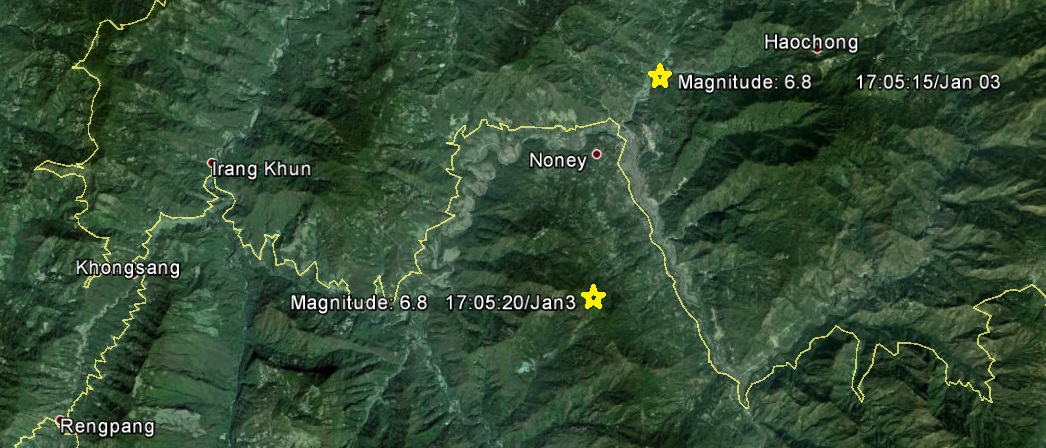
IndiaIndia-News-IndiaLIVE: Earthquake measuring 6.7 on Richter Scale hits Manipur; 6 dead over 50 injured
LIVE: Earthquake measuring 6.7 on Richter Scale hits Manipur; 6 dead over 50 injured
The earthquake, measuring 6.7 on the Richter Scale, occurred at 4.37 a.m and had its epicentre in Manipur's Tamenglong district bordering. Bangladesh, Myanmar and Bhutan felt the quake too.
An earthquake of moderate intensity rocked India’s northeastern states and adjoining Myanmar, Bangladesh and Bhutan on Monday morning, officials said.
In India, six people died due to injuries and at least 35 people were injured in Imphal, where a building collapsed. Reports of injuries also came in from Siliguri district of West Bengal. The number of those injured is likely to rise. Two NDRF teams have been rushed to Imphal from Guwahati.
Power supply has been cut-off in Imphal and is yet to be restored. At around 9.30 am, a fresh tremor measuring 3.6 on the Richter Scale hit Manipur.
Meanwhile, the National Crisis Management Committee is scheduled to meet at 10.30 am to assess the situation. The NDMA is monitoring the situation and coordinating rescue efforts.
“The quake, measuring 6.7 on the Richter Scale, occurred at 4.37 a.m and had its epicentre in Manipur’s Tamenglong district bordering,” said an official of the regional seismological centre here in Meghalaya.
...
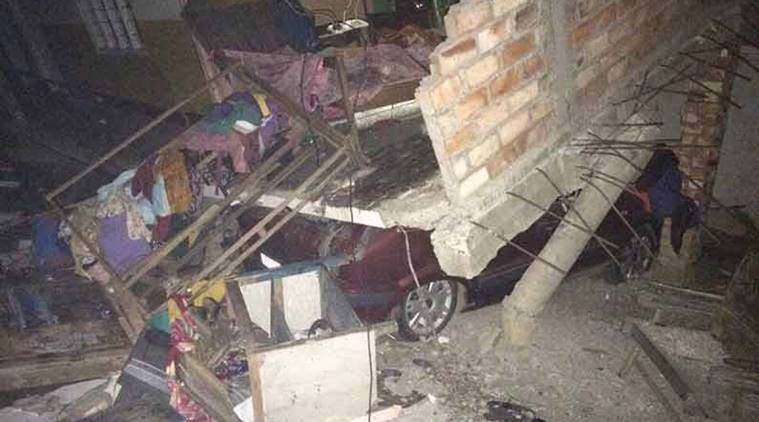
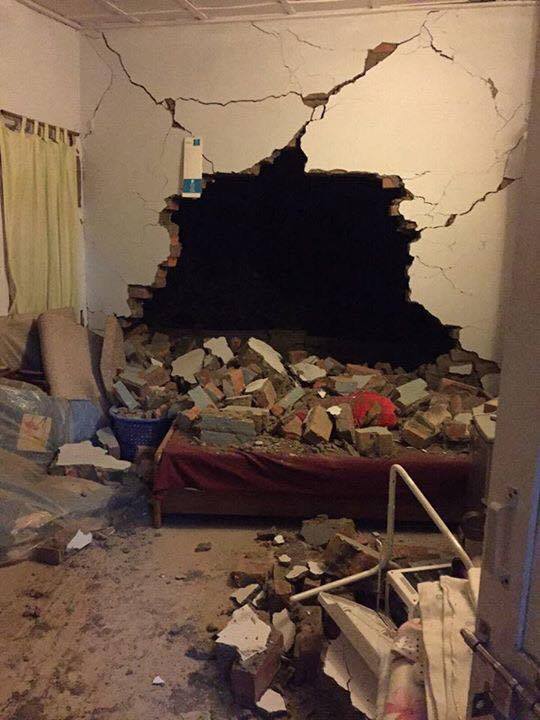
CHENNAI: Chennai-based Structural Engineering Research Centre (CSIR-SERC), a pioneer advanced seismic testing and research laboratory under the Council of Scientific & Industrial Research (CSIR), has completed the testing of the German-developed “Early Earthquake Warning and Security System”, which was launched for the first time in India early this year.
Germany-based manufacturing company Secty Electronics with its Indian partner Terra Techcom has claimed that the tests were successful and got the green signal from Haryana government for installation of the ‘life-saving’ gadget at the mini-secretariat in Chandigarh on March 14.
“The Haryana government has asked us to do the testing in any of the Indian laboratories and SERC was the only advanced facility available. The testing was conducted on Thursday and the scientists have expressed their satisfaction,” Bijender Goel, managing director, Terra Techcom, said.
N Gopalakrishnan, chief principal scientist and an expert in structural dynamics and earthquake engineering, told Express that the test reports would be made public in a couple of days. “We conducted all relevant tests. Basically, we tried to measure the peak ground acceleration (g) and peak ground velocity on an intensity scale through real-time tests, which will give us the estimate of how much time the device gives for the people or authorities to take evasive action. For instance, at 0.001g, people will feel the tremor, and at 0.02 g, people will lose their balance.”
Juergen Przybylak, Managing Director of Secty Electronics, shows the Early Earthquake Warning and Security System, in the city | P Ravikumar
Juergen Przybylak, managing director, Secty Electronics, said the GEO research centre in Germany collated 100-year data on earthquakes and developed an algorithm. “Our company has developed warning system software based on the algorithm to detect the P (primary) wave that the device alerts before the secondary waves hit the structure and, thus, giving more time for people to escape.”
The technology has already been put to critical testing at GFZ-Potsdam, and was certified ‘most effective’ and 26 countries have already installed it, claimed those behind the project.
They could teach some stuff at the school level tooWith disasters like earthquake, floods and structure collapses occurring frequently in India, the national calamity response force NDRF feels it is time that citizens are “trained” in combating both man-made and natural catastrophes.
The view has also been endorsed by a recently published IIT Delhi case study on the working of the force.
For the first time, the elite technology institution has worked on and prepared an analytical report on the response mechanism and challenges facing the National Disaster Response Force under the topic: “Leading from the Front: Awareness, Engagement and Intervention for Community Empowerment.”
The study paper, conducted by two researchers Dr. Mahim Sagar and Deep Shree, was presented during the two-day ’Conference on Brand Management’ hosted by the Indian Institute of Technology here with an aim to “aggregate and share the latest research findings on brand management.”
The conference concluded today.
While making his intervention during the presentation of the study yesterday, NDRF Director General O.P. Singh stressed on the need to build a cohesive and structured response by the country in the face of disasters.
“We empower the community on a regular basis as part of our social commitment which also works as our external branding. We do this when we are not tackling disasters. In fact, our view is that the entire nation needs to be trained on disaster management and disaster response and therefore, there has to be training on a regular basis,” the DG said while interacting with researchers, scholars and faculty at the IIT here.
Mr. Singh stressed community training is very essential and he spelled out the reasons for it.
“How you communicate with the community, how you make the community as the first responder is very essential. In fact, I go a step further to say that the community is not only the first responder but it is the last responder as well. All the institutions and forces (that come for relief and rescue work) will leave but it is only the community that remains there to help you,” he said.
The chief of the about 12,000 specially trained personnel force, who has himself been at the forefront numerous times, recalled tragedies like the floods in Jammu and Kashmir and Chennai, the recent flyover collapse in Kolkata and last year’s powerful earthquake in Nepal to buttress his point on having a focused response by all the stakeholders involved in such tragedies.
“In India, we have millions of people exposed to natural and man-made disasters...which turn into nightmares. According to the vulnerability profile, India is one of the five most hit countries of the world followed by the U.S., China and few other countries.
“About 4.8 million people are hit by disasters every year in India...hence it is very important to think if building resilience is going to be a personal choice or it is going to be a collective imperative,” he said.
The IIT case study not only praises the force for becoming the “most visible face” during disasters in a very short span of time but also underlines that it is struggling with several issues like shortfall of personnel, issues related to infrastructure for its responders and better response time in the wake of an information of a disaster getting unleashed in any part of the country.
The study states that the NDRF needs good and smart equipment to save as many lives as possible during a calamity.
“The priority of the NDRF is to save maximum number of lives while sustaining minimum damage and this can be achieved only when it has the equipment which will help its personnel in taking swift action with utmost precision.
“The procurement is no more a reactive activity, it is more of a proactive step being taken in accordance with the feedback received from personnel on ground and latest research in the area,” the study said.
It added the force has recently finalised procurement of 24 new gadgets including latest gadgets such as a level suits (to combat hazardous substances), light weight powerful generators, rope rider system, inflatable LED lights, life detectors and deep penetration ground sensing radars which will further help it in saving lives during earthquakes, floods and other calamities.
“The procurement of these equipment will help the NDRF in tracing trapped victims and will also improve the communication and response mechanism,” the study, prepared after months of working on the subject by the two IIT Delhi researchers, said.
DG Singh said while he was happy that a not-for-profit social and government organisation like NDRF has been chosen as a subject to be included in the league of “brands”, it was the forces’ commitment with the cause that made it professional, pro-active, visible and innovative.
In order to be a “visible fighter” in the realm of disaster management, the DG said, the force was deploying smart communication tools like usage of social media to make themselves more avialable to society and its welfare.
The NDRF, a full deputationist organisation which draws its manpower from central paramilitary forces, works under the Union Home Ministry and its 12 battalions are stationed at strategic locations in the country aided by 23 regional response centres in other cities.
The force was the lead unit working to provide succour to the victims of numerous tragedies including the 2013 Uttarakhand floods and rains and last year’s quake in Nepal to count amongst the few prominent ones.